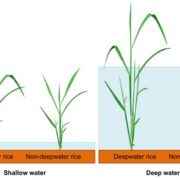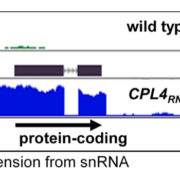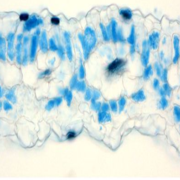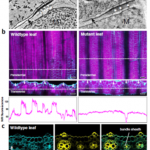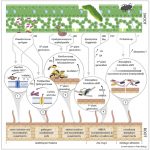Phytochrome regulates cellular response plasticity and the basic molecular machinery of leaf development (Plant Physiol)
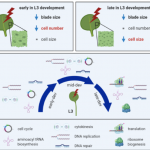 The effects of light on plant growth are incredibly complex and depend on where it is perceived, light quantity, light quality (wavelength), and when within the circadian cycle it is perceived. Romanowski et al. examined the effect of late-day far-red light perception in Arabidopsis leaves. This treatment is known to induce shade-avoidance syndrome, which is characterized by increased elongation and decreased leaf expansion, growth patterns that help the plant to rise above its competitors. The authors noted that much of the effect of end-of-day far-red (EoD FR) treatment was mediated by inhibiting the cell-division (early in leaf development) and -expansion (later in leaf development) promoting activities of phytochrome B (phyB); in fact, the light treatment was largely phenocopied by mutation of phyB. A timed transcriptomic analysis following EoD FR treatment showed widespread suppression of biological processes including most hormone pathways, cell cycle, DNA replication, and translation. An online application to explore this large dataset is provided. Plant Physiol. 10.1093/plphys/kiab112 (Summary by Mary Williams @PlantTeaching)
The effects of light on plant growth are incredibly complex and depend on where it is perceived, light quantity, light quality (wavelength), and when within the circadian cycle it is perceived. Romanowski et al. examined the effect of late-day far-red light perception in Arabidopsis leaves. This treatment is known to induce shade-avoidance syndrome, which is characterized by increased elongation and decreased leaf expansion, growth patterns that help the plant to rise above its competitors. The authors noted that much of the effect of end-of-day far-red (EoD FR) treatment was mediated by inhibiting the cell-division (early in leaf development) and -expansion (later in leaf development) promoting activities of phytochrome B (phyB); in fact, the light treatment was largely phenocopied by mutation of phyB. A timed transcriptomic analysis following EoD FR treatment showed widespread suppression of biological processes including most hormone pathways, cell cycle, DNA replication, and translation. An online application to explore this large dataset is provided. Plant Physiol. 10.1093/plphys/kiab112 (Summary by Mary Williams @PlantTeaching)


